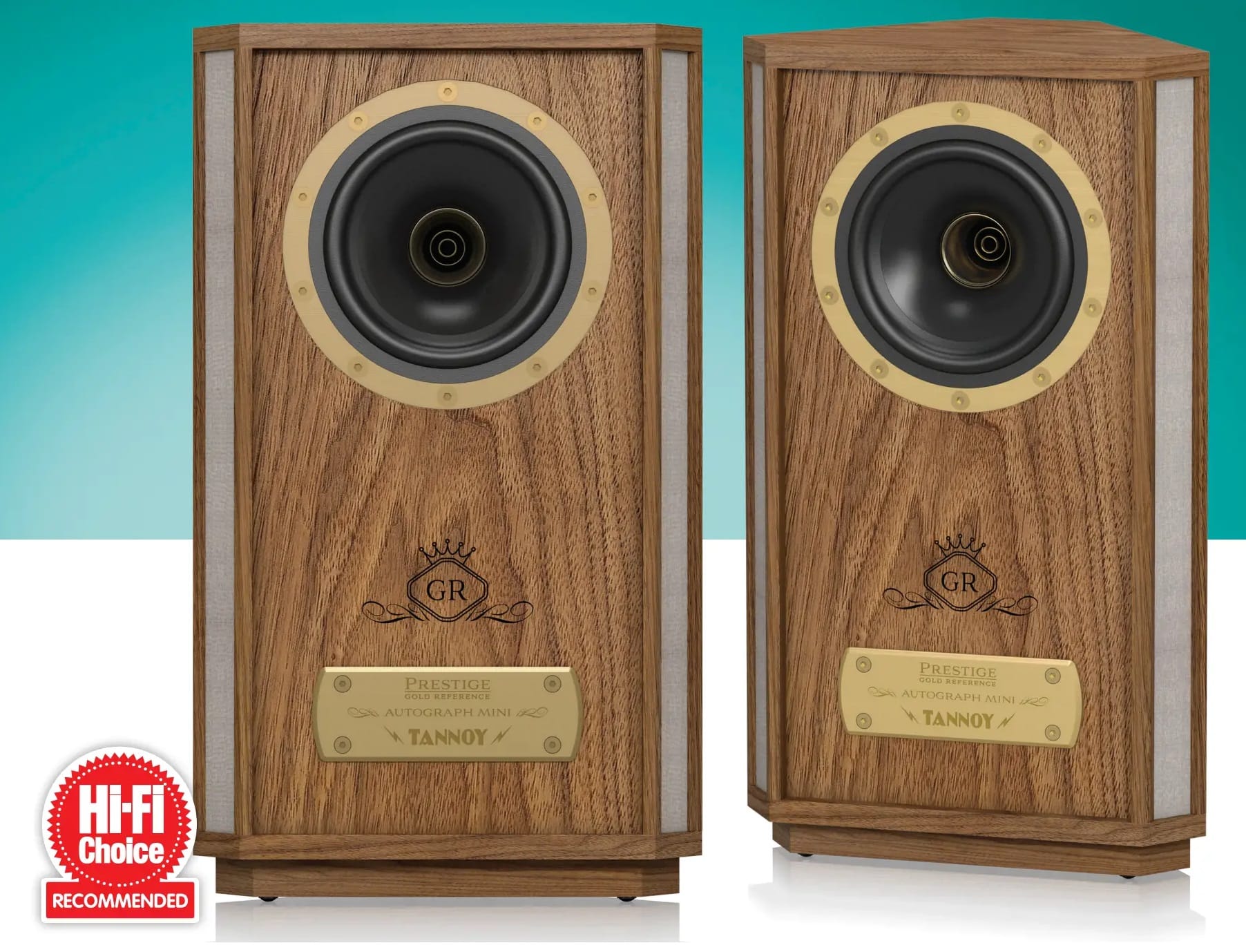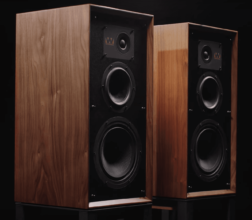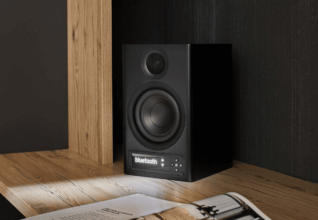Tannoy Autograph Mini Review
Looking for the Tannoy Heritage aesthetic but find yourself tight on space? Ed Selley checks out this more room-friendly option, Autograph Mini.

Mining your heritage is big business for companies both in audio and a host of other product categories. A little taste of nostalgia to remind people of when things were a bit less awful (or at least differently awful) can go a long way at the moment. Sometimes, tapping into this back catalogue is not completely straightforward, however.
Design
Tannoy has a truly magnificent pedigree in the realm of large speakers and had a Heritage range long before it was fashionable to have one, although the nature of its designs means they won’t appeal to everyone. Even a ‘small’ heritage model is a pretty substantial thing needing a fair amount of space. This is where the Autograph Mini comes in. It’s designed and built pretty much exactly the same as any other Heritage Tannoy, but shrunk to around 30 percent of the size. The second you see it, you are faced with a knowing generation of the Mini, referencing the concept has been sufficiently successful to warrant a refresh that takes on recent updates to the full-size speakers.
Key to being a Tannoy is the use of a dual concentric-type driver where the tweeter sits in the throat of the mid/bass driver. The Mini uses a 120mm version, made of doped paper and with a prominent rubber surround. At the center of this sits a 25mm titanium tweeter that is placed inside Tannoy’s ‘tulip’ waveguide – designed to help the dispersion of high-frequency energy from the tweeter in relation to the mid/bass. The internal wiring is all silver, and the crossover uses proprietary Tannoy capacitors and low-loss laminated core inductors. Connection to an amplifier is via a single set of binding posts.
This assembly sits inside a cabinet that is a diminutive version of the full-size speakers. Viewed from above, it has sharply tapering sides that reflect the original corner placement ideal of the larger models, which means the internal volume of the cabinet is relatively small. Tannoy doesn’t specify exactly what this is, but the Autograph Mini is certainly smaller than most rivals.
The key point of difference between this cabinet and most contemporary designs is that it is made out of wood – in this case, high-density ply – rather than a variation of MDF. The emphasis on internal sections that are designed to act as resonance and damping control by being less inert than the main sections of the cabinets. The result is it looks every bit as traditional as you might expect while offering a more modern performance.
Sound Quality
It’s hard not to wire up the Tannoy without thinking it is going to be like a curious effects box that injects a spot of Pathé into everything it does. It doesn’t take very long to realise that this is not the case. Connected to a Chord Electronics QuTest and Naim Supernait 3, the immediate impression is of a speaker that performs a Tannoy party piece exceptionally well. Listening to the stunning Rogues Gospel by Duke Garwood on the Autograph Mini is astonishingly atmospheric. The speaker does an incredible job of creating a three-dimensional space in which these brooding blues tracks take place.
And, they really do take place rather than simply getting reproduced. Garwood’s rasping vocals are weighty, tangible, and utterly believable. The supporting guitars and sparse percussion have a tangibility that’s hard not to become entirely smitten by. Far from making everything sound like it escaped from the Sixties, the Tannoy is capable of outstanding transparency more akin to a monitor than a historical artifact.
This does mean it’s not really an ideal choice for a collection centered around rough recordings. It would be a stretch to call the Tannoy bright or unforgiving, but it will let you know in no uncertain terms where any issues in recordings lie. This facet of its performance means it pairs up nicely with an analogue front-end – in this case, a Michell GyroDec, SME309, and Van den Hul DDT II.
The fundamentally forgiving nature of this setup allows the Autograph Mini to get on doing what it does with a little bit of sweetness already in the signal. What is rather more surprising is how little the notional limits to the bass response seem to matter once you have been listening for a while. Tannoy’s measurements aren’t inaccurate – the Mini is all out of ideas by around the 55Hz mark, but this doesn’t prevent it from sounding punchy and surprisingly authoritative.
Conclusion
While the reputation for Tannoy being ‘a bit pipe and slippers’ is rather outdated, this is a subtly different beast to its full-size relatives. Without losing the abilities that have made it as well regarded as it is, this Autograph Mini demonstrates a sense of get-up-and-go and engagement that means this is not some polite relic of a bygone age, fit only for playing chamber music.
What it is instead is an immaculately finished, attractive, and entirely practical speaker that can deliver absolute delight when called upon to do so. In harnessing its past, Tannoy has built a fabulous speaker for the present and one that will slot into a variety of systems to great effect.
Sound Quality: 5 stars
Value: 4.5 stars
Build Quality: 5 stars
Ease of Drive: 5 stars
Specs
- Product: Tannoy Autograph Mini
- Origin: UK
- Type: Standmount loudspeaker
- Weight: 4.4kg each
- Dimensions: 290 x 365 x 155mm
- Features: 25mm titanium tweeter, 120mm mid/bass driver
- Sensitivity: 85dB/W
- Distributor: Tannoy
- Website: tannoy.com






